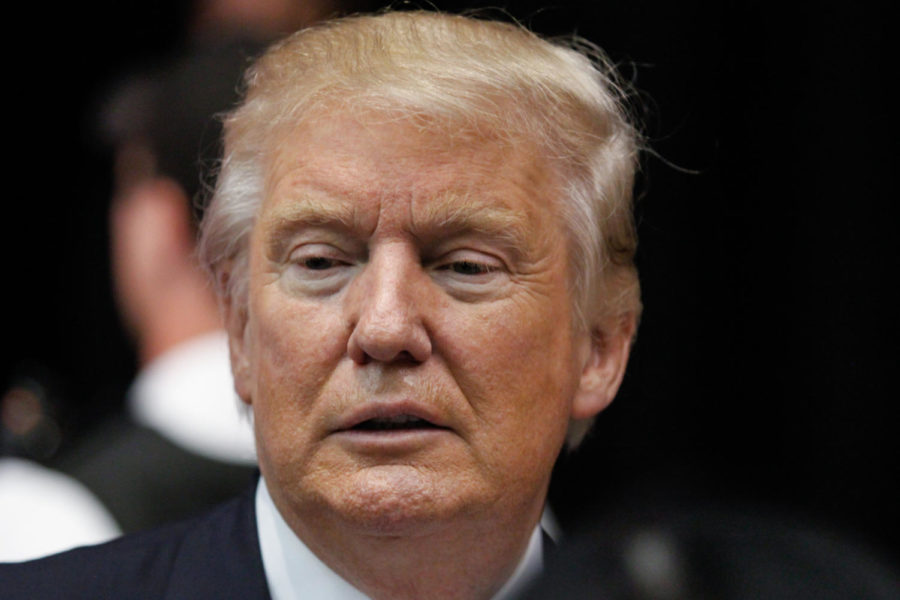President Donald Trump addresses Congress in first joint session speech
February 28, 2017
President Donald Trump addressed a joint session of Congress and the nation on Tuesday in hope of promoting a “softening on both sides” between congressional members, especially in relation to the president’s recent proposal for a compromise on the immigration travel ban.
In a little more than a month since Trump assumed office, congressional lawmakers have debated issues concerning the economy, military spending, infrastructure reform, national security and environmental protection.
However, the speech largely focused on tax reform, the fate of Obamacare, the recent immigration ban that was repealed after a Circuit Court judge decreed it to be unconstitutional and the wall across the U.S. southern border accompanying it.
The Wall and merit-based immigration
Trump used his speech to promote the immigration enforcement and border security. Trump cited that “by finally enforcing our immigration laws, we will raise wages, help the unemployed, save billions of dollars and make our communities safer for everyone.”
He also addressed the construction of a wall that would span the southern states that border Mexico, saying the plans to commence the project would “[start] ahead of schedule and, when finished, it will be a very effective weapon against drugs and crime.”
Trump also introduced a new immigration system that would seek to admit only highly-skilled immigrants, while barring low-skilled immigration from entering the country.
Believing that the new system would save the United States “countless dollars, raise workers’ wages and help struggling families,” Trump alluded to the goal of the reform as a way “to strengthen our nation’s security and to restore respect for our laws.”
Tax reform
Trump did not give extensive details on how his administration would provide tax relief but mentioned that he had compiled an economic team “that will reduce the tax rate on our companies so they can compete and thrive anywhere and with anyone.”
He also mentioned that his administration would be focused on providing massive tax cuts for the middle class as a way to “create a level(ed) playing field for American companies and workers.”
Infrastructure spending
Trump also announced to congressional lawmakers his initiative to invest $1 trillion into Americans infrastructures.
This has been a debated issue among both Democratic and Republican parties, as both have expressed concerns about improving the United States’ public infrastructures without raising the current $441 billion deficit.
Trump also expressed that the investment — financed through private and public capital — would fuel job growth. He also coined a new phrase for the legislative plan: Buy American, and hire American.
Public safety
Trump alerted the nation that he had directed the Department of Justice to form a Task Force on Reducing Violent Crime, while the Departments of Homeland Security and Justice, Department of State and the Director of National Intelligence have been ordered to “stop the drugs from pouring into our country and poisoning our youth.”
Military spending
The president also used his platform to shed light on his recent comments pertaining to military spending. In his address to the joint session of Congress, Trump laminated a decision to provide “a budget that rebuilds the military, eliminates the defense sequester and calls for one of the largest increases in national defense spending in American history.”
He also offered to increase funding for military veterans.
The president also called on the Democrats and Republicans to help repeal the Affordable Care Act, or Obamacare. He outlined five principles that would be used to shape a new health care system designed by his administration:
- Those with pre-existing health conditions can still seek access to proper health care and that Americans are able to move between state health care exchanges, or marketplaces.
- Expand the Health Savings Account, so that Americans are able to purchase a customizable health care coverage through the government.
- Allocate the proper funds, resources and legislative power to state governors to ensure the continued stability of Medicaid.
- Implement legal safeguards for patients and doctors to protect both groups from increasing medical insurance costs and prescribed medication.
- Allow health care exchanged to cross state lines and create a competitive national marketplace to help reduce insurance costs.







